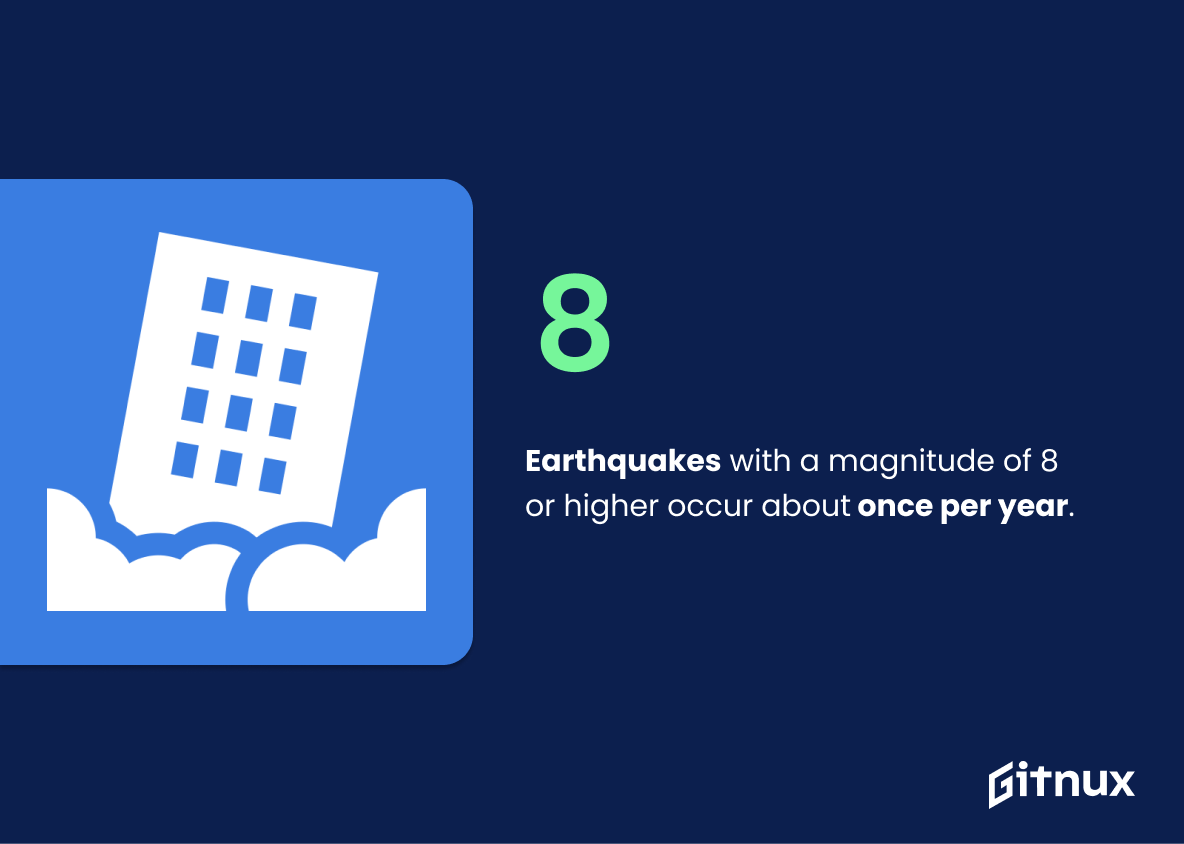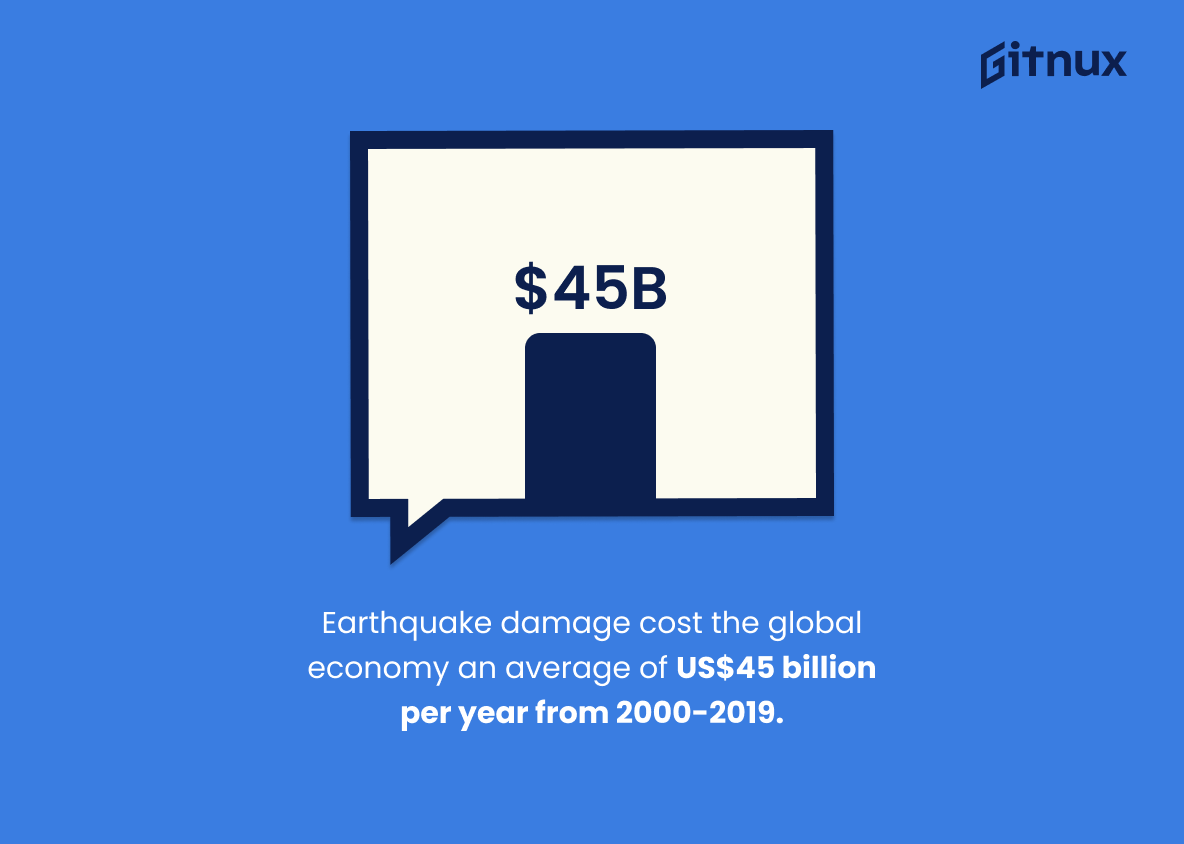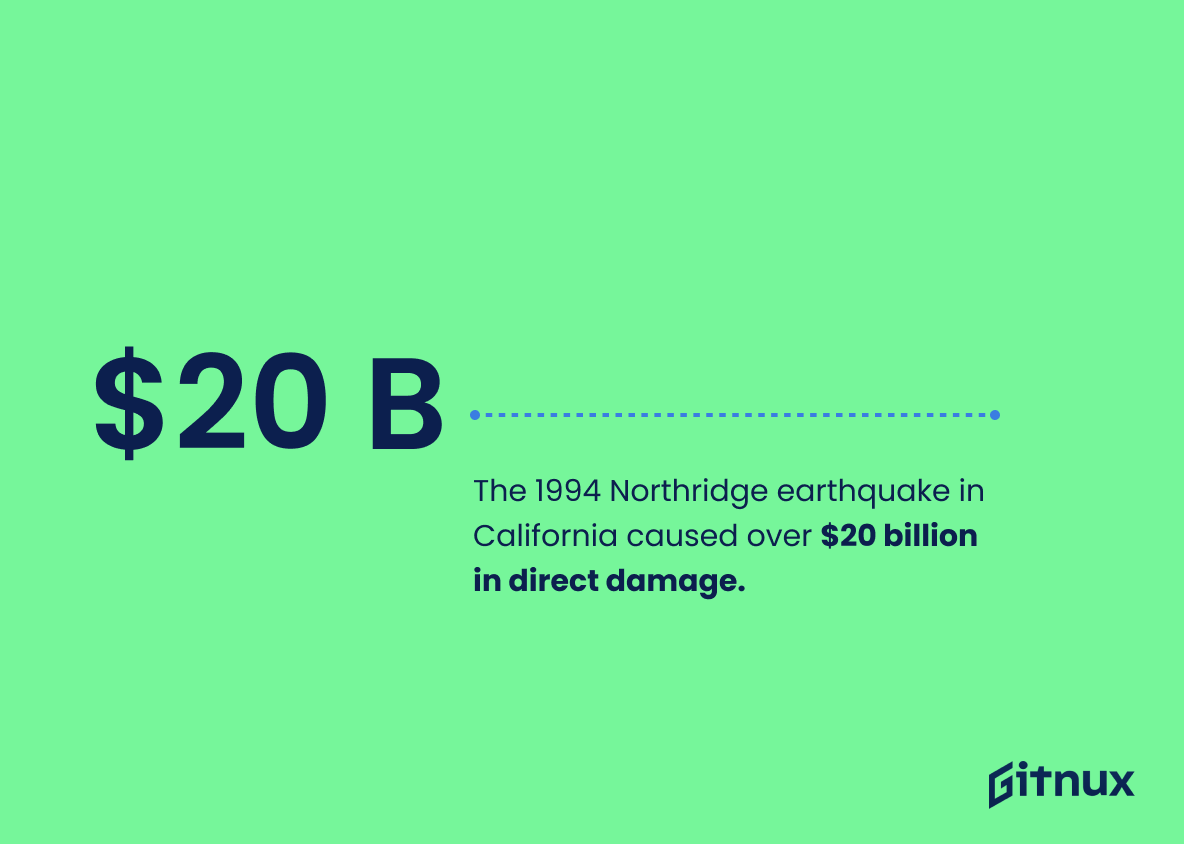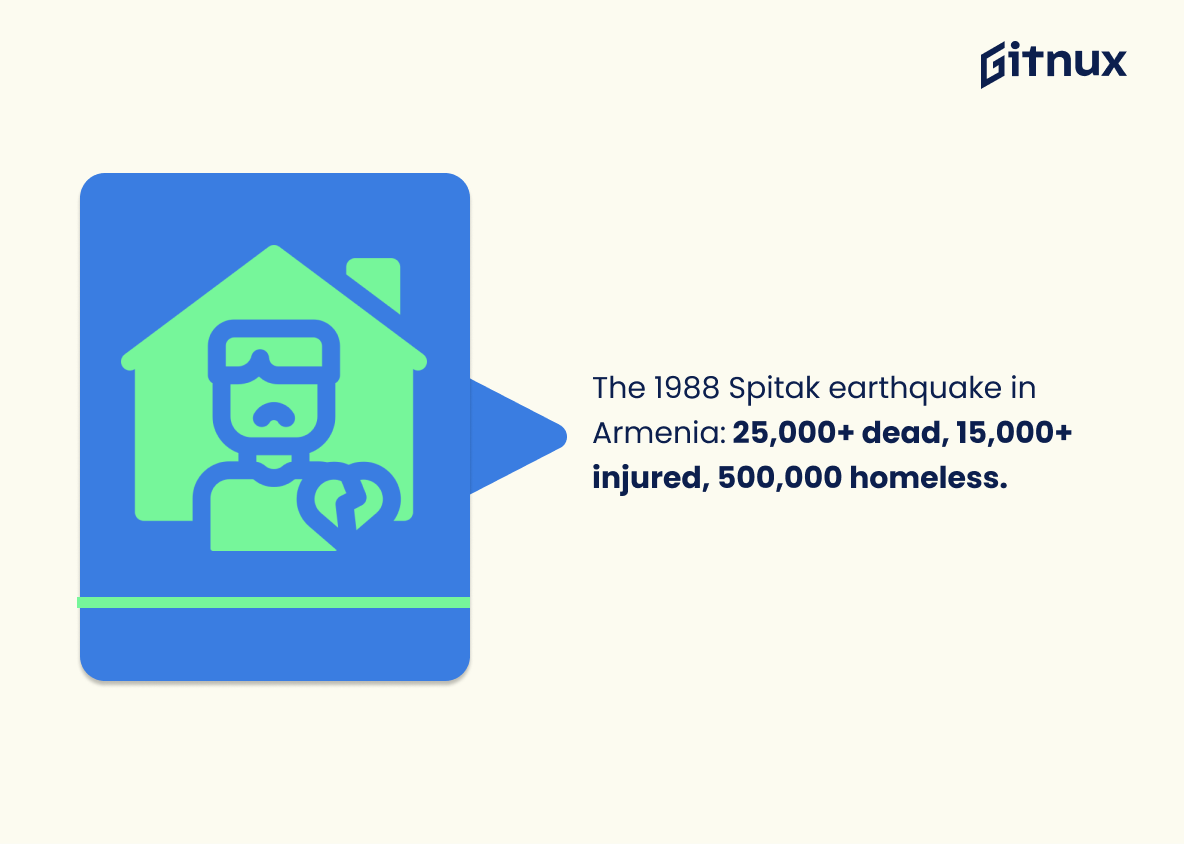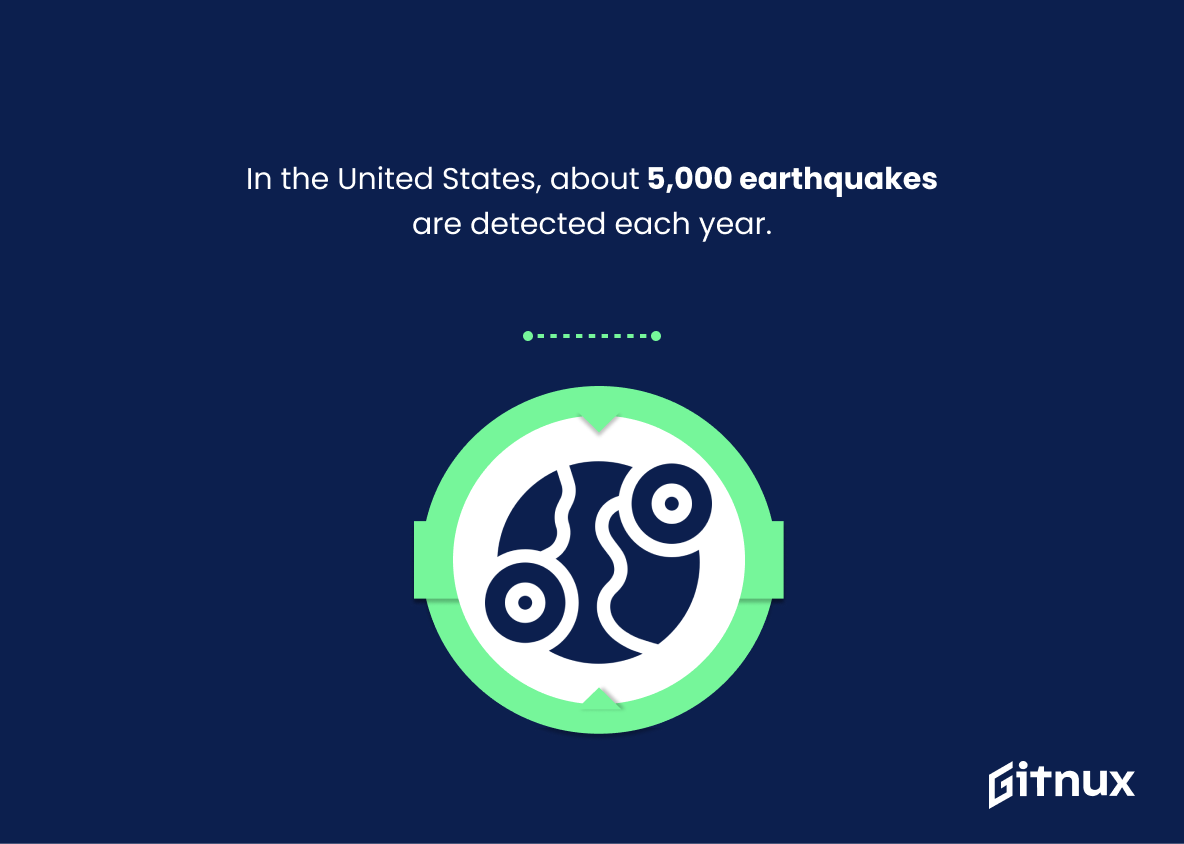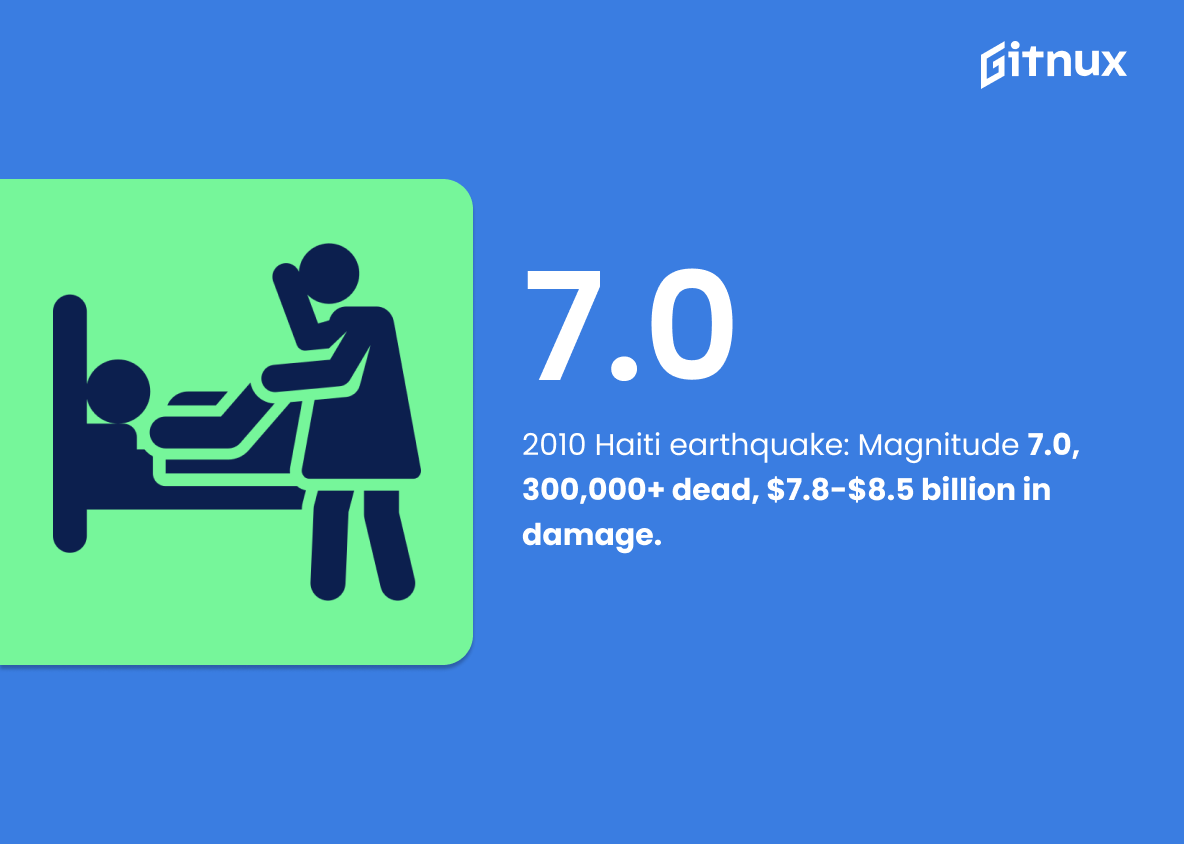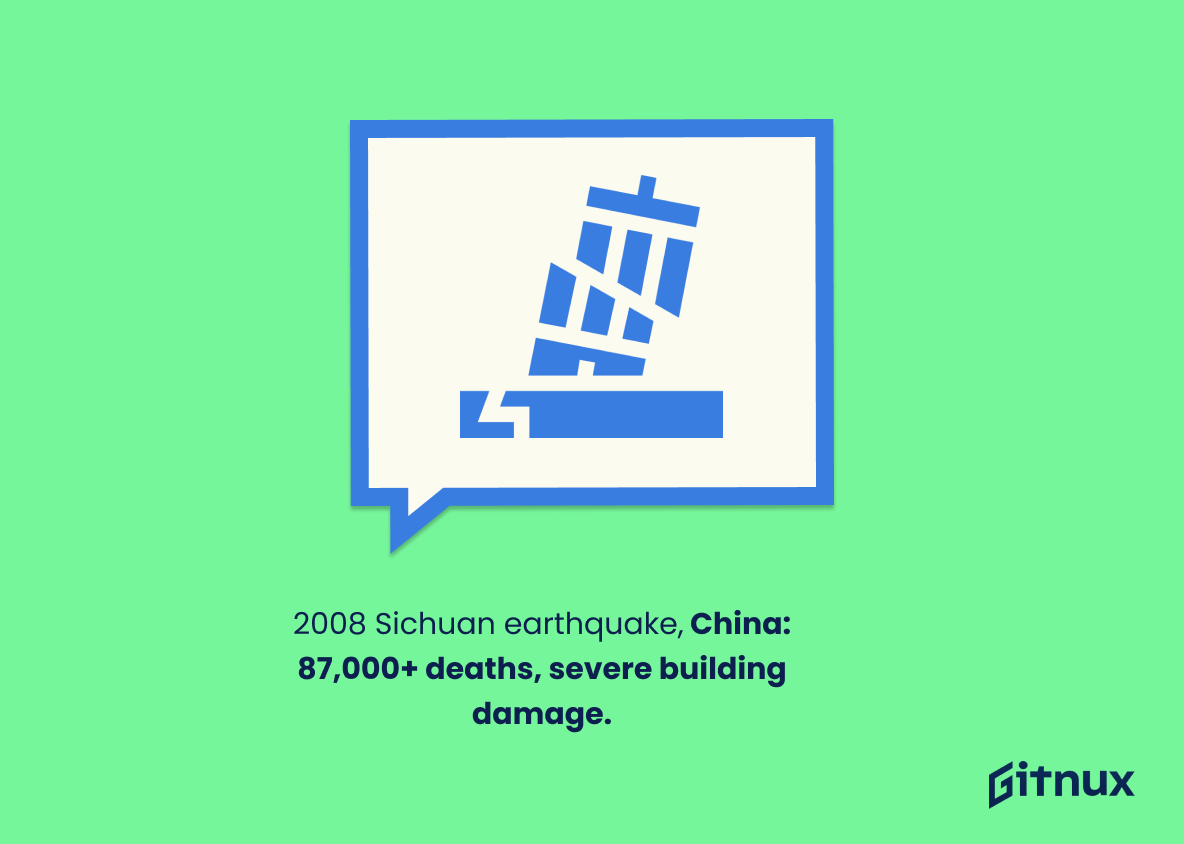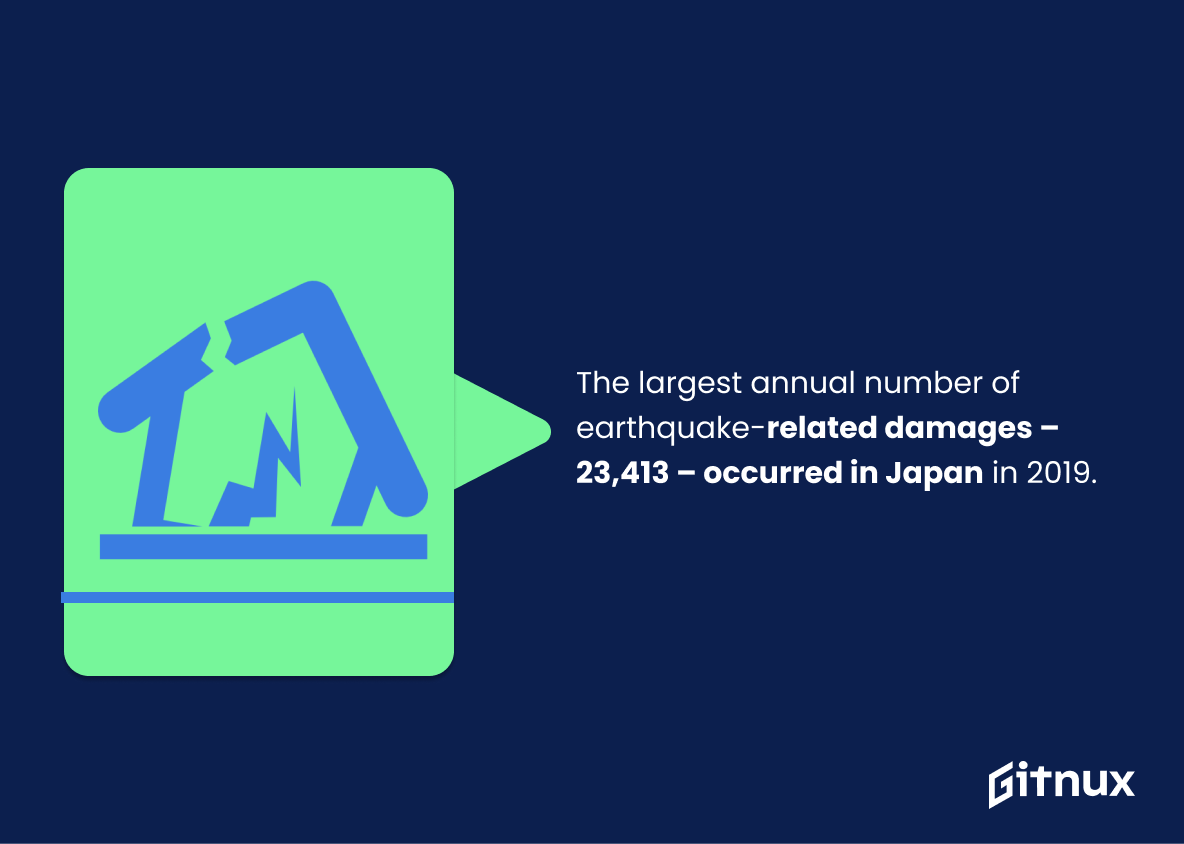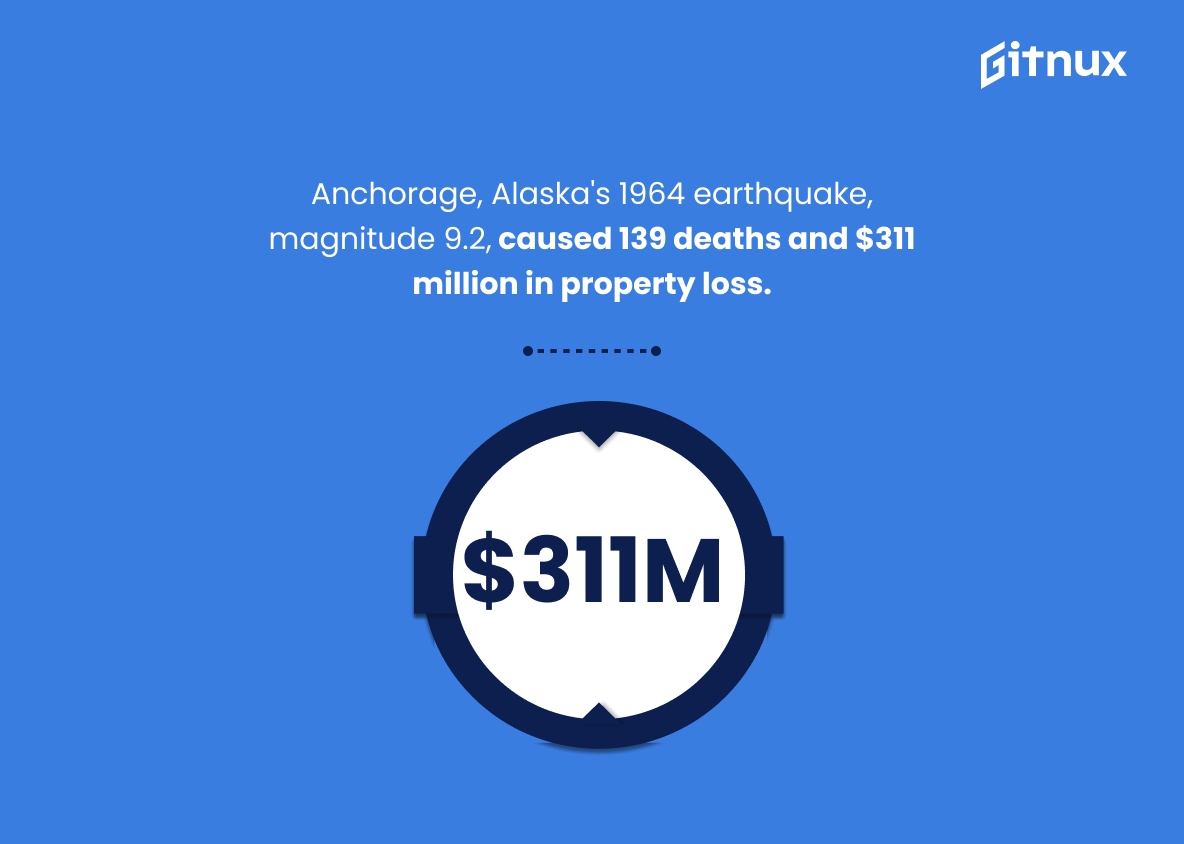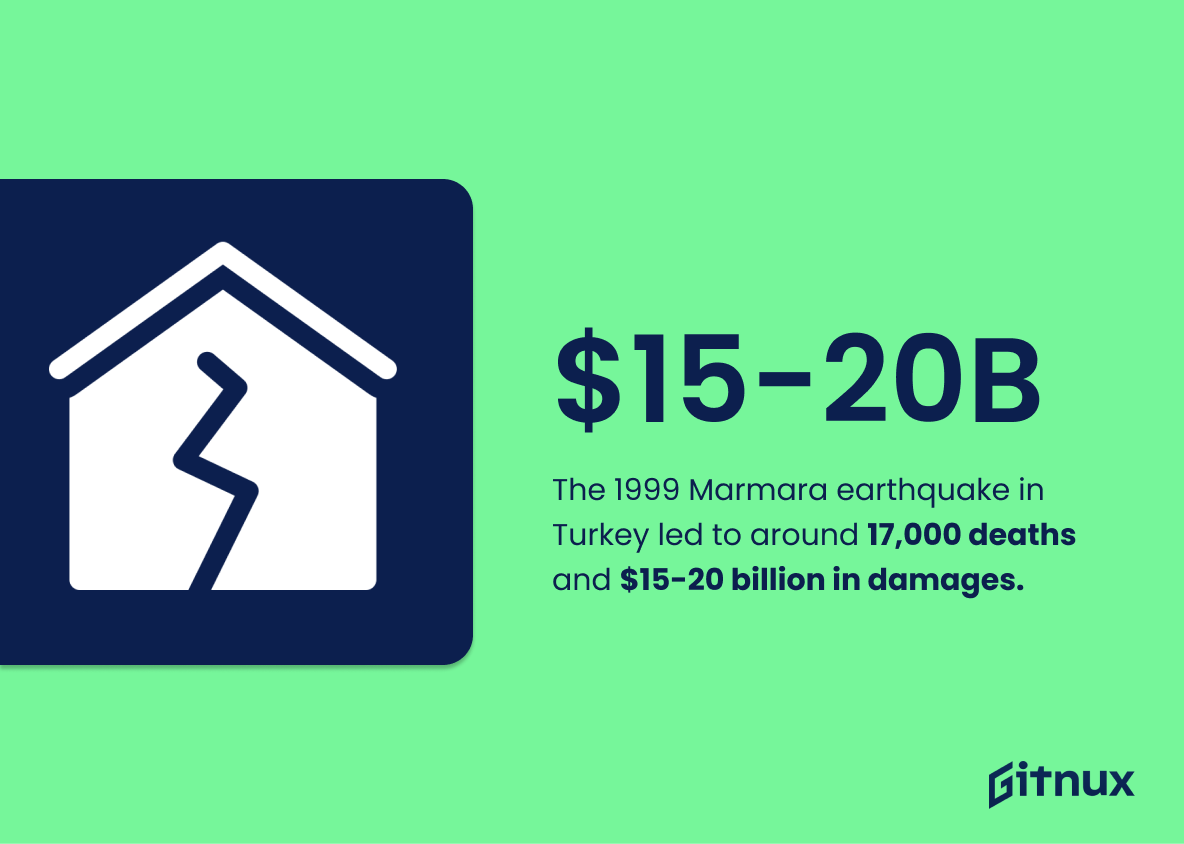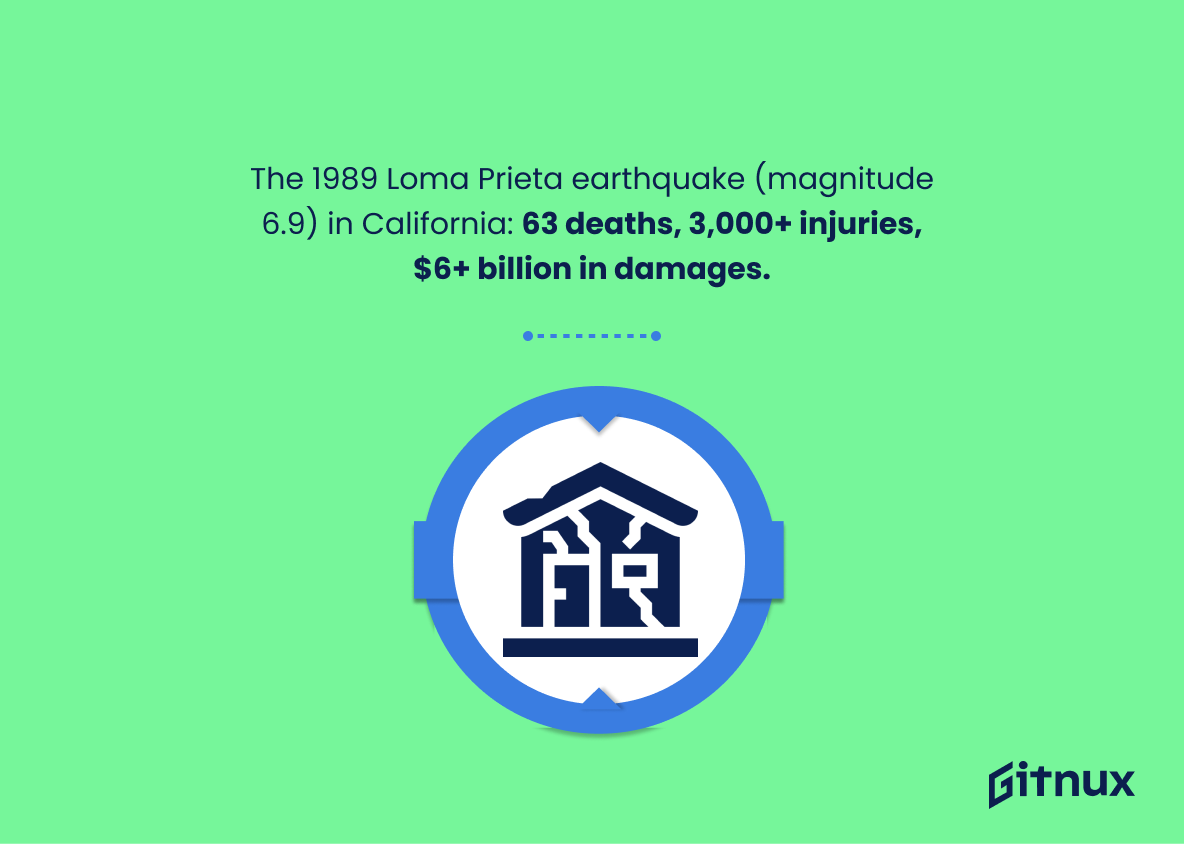Earthquakes are one of the most destructive natural disasters in the world, causing significant damage to both life and property. According to statistics from various sources, approximately 75% of the world’s deadliest earthquakes have occurred in an area known as the Pacific Ring of Fire. From 1995-2015, 682,000 people died due to earthquakes and related hazards. Earthquakes with a magnitude of 8 or higher occur about once per year on average while earthquake damage costed global economy an average US$45 billion per year between 2000-2019.
The 1994 Northridge earthquake in California caused over $20 billion in direct damages while 2011 Tohoku earthquake and tsunami resulted into economic losses worth around $360 billion dollars for Japan alone. In 2020 Turkey experienced 7 magnitude quake that caused nearly $786 million loss whereas 1988 Spitak Earthquake killed 25 thousand people leaving 500 thousand homeless at Armenia itself. The United States experiences 5 thousands quakes each year according to USGS data; 2010 Haiti Earthquake had estimated magnitude 7 resulting 300K fatalities & costing up-to 8 Billion USDs; 2008 Sichuan Quake claimed 87k lives & building damages were huge too; 1960 Great Chilean Earthquake was recorded 9th largest ever with 9 point 5 magnitudes followed by 2019 Japanese 23413 occurrences having highest annual number worldwide. 1964 Anchorage Alaska’s quake had 9 point 2 magnitudes claiming 139 deaths & 311 Million USD Property Losses where 2004 Indian Ocean Tsunami took 227897 lives along 10 Billion Dollars Damage Costing. 1999 Marmara Quake left 17 Thousand dead plus 15 – 20 Billions Damages at Turkey whereas 2005 Kashmir Quake (7 Point 6 Magnitude) Killed 75 Thousand People making 3 Point 5 Millions Homeless alongside 54 Billions Dollar Damages..
Earthquake Damage Statistics Overview
Earthquakes with a magnitude of 8 or higher occur about once per year.
This statistic is a stark reminder of the potential for catastrophic destruction that earthquakes can bring. With a magnitude of 8 or higher, these earthquakes can cause immense damage to infrastructure, homes, and lives. Knowing that these events occur on average once a year is a sobering reminder of the importance of being prepared for the worst.
Earthquake damage cost the global economy an average of US$45 billion per year from 2000-2019.
This statistic is a stark reminder of the devastating economic impact of earthquakes on the global economy. It highlights the need for increased investment in earthquake preparedness and mitigation measures to reduce the economic losses caused by these natural disasters. Furthermore, it serves as a call to action for governments and organizations to prioritize the development of strategies to reduce the economic burden of earthquakes on communities around the world.
The 1994 Northridge earthquake in California caused over $20 billion in direct damage.
This statistic serves as a stark reminder of the immense destruction that earthquakes can cause. The $20 billion in direct damage caused by the 1994 Northridge earthquake is a testament to the power of seismic activity and the need for preparedness in the face of such a natural disaster.
The 1988 Spitak earthquake in Armenia killed over 25,000 people, injured 15,000, and left 500,000 homeless.
This statistic serves as a stark reminder of the devastating impact that earthquakes can have on communities. It highlights the immense destruction that can be caused in a matter of seconds, with thousands of lives lost, thousands more injured, and hundreds of thousands left without a home. It is a reminder of the importance of being prepared for earthquakes and the need to take steps to reduce the risk of such destruction occurring again.
In the United States, about 5,000 earthquakes are detected each year.
This statistic serves as a reminder of the sheer magnitude of seismic activity that occurs in the United States each year. It is a stark reminder of the potential for destruction that earthquakes can bring, and the importance of being prepared for them.
The 2010 Haiti earthquake had an estimated magnitude of 7.0, resulting in over 300,000 fatalities and causing $7.8-$8.5 billion in damage.
This statistic serves as a stark reminder of the devastating power of earthquakes, with the 2010 Haiti earthquake causing an immense amount of destruction and loss of life. It highlights the importance of understanding the potential damage that earthquakes can cause and the need to be prepared for such disasters.
The 2008 Sichuan earthquake in China caused the deaths of approximately 87,000 people and significant building damages.
This statistic serves as a stark reminder of the devastating impact that earthquakes can have on communities. It highlights the importance of understanding the risks associated with earthquakes and taking the necessary steps to protect against them. It also serves as a reminder of the need for governments and organizations to be prepared to respond to such disasters in order to minimize the loss of life and property.
The 1960 Great Chilean Earthquake, with a magnitude of 9.5, remains the largest earthquake ever recorded.
This statistic serves as a reminder of the immense power of earthquakes and the destruction they can cause. It is a stark reminder of the potential devastation that can be caused by seismic activity, and serves as a warning to those living in earthquake-prone areas to be prepared for the worst. It also serves as a benchmark for the magnitude of earthquakes that have occurred since, and can be used to compare the severity of different earthquakes.
The largest annual number of earthquake-related damages – 23,413 – occurred in Japan in 2019.
This statistic serves as a stark reminder of the devastating effects of earthquakes, particularly in Japan. It highlights the need for increased awareness and preparedness in order to mitigate the potential damage caused by these natural disasters. Furthermore, it serves as a call to action for governments and organizations to take steps to reduce the risk of future earthquakes and their associated damages.
Anchorage, Alaska’s 1964 earthquake had a magnitude of 9.2, causing 139 deaths and approximately $311 million in property loss.
This statistic serves as a stark reminder of the devastating power of earthquakes, as Anchorage, Alaska’s 1964 earthquake caused 139 deaths and over $311 million in property loss. It is a reminder of the importance of being prepared for earthquakes and the potential destruction they can cause.
The 1999 Marmara earthquake in Turkey caused approximately 17,000 deaths and $15-20 billion in damages.
This statistic serves as a stark reminder of the devastating impact that earthquakes can have on a region. It highlights the immense loss of life and the staggering financial cost of the 1999 Marmara earthquake in Turkey, demonstrating the immense destruction that can be caused by seismic activity. This statistic is a powerful reminder of the importance of being prepared for earthquakes and the need to take steps to reduce the potential damage they can cause.
The 2005 Kashmir earthquake, with a magnitude of 7.6, caused around 75,000 deaths and left 3.5 million people homeless, with an estimated damage cost of $5.4 billion.
This statistic serves as a stark reminder of the devastating impact that earthquakes can have on communities. It highlights the immense loss of life and displacement of people that can occur in the wake of a major seismic event, as well as the immense financial cost of rebuilding and recovery. It is a sobering reminder of the importance of preparing for and responding to earthquakes in order to minimize the damage they can cause.
The 1995 Kobe earthquake in Japan had an estimated magnitude of 6.9, which led to the deaths of approximately 6,434 people and a total economic loss of up to $200 billion.
This statistic serves as a stark reminder of the devastating power of earthquakes. The 1995 Kobe earthquake in Japan caused an immense amount of destruction, with 6,434 people losing their lives and an estimated economic loss of up to $200 billion. This statistic serves as a reminder of the importance of being prepared for earthquakes and the need to take steps to reduce the potential damage they can cause.
The 2015 Nepal earthquake caused an estimated 9,000 deaths, injured over 22,000 people, and resulted in damages exceeding $10 billion.
This statistic serves as a stark reminder of the devastating impact that earthquakes can have on communities. It highlights the immense loss of life, the sheer number of people injured, and the tremendous financial cost of the 2015 Nepal earthquake. It is a powerful illustration of the destruction that earthquakes can cause, and serves as a reminder of the importance of being prepared for such disasters.
The 1989 Loma Prieta earthquake in California had a magnitude of 6.9 and caused 63 deaths, over 3,000 injuries, and more than $6 billion in damages.
This statistic serves as a stark reminder of the devastating effects that earthquakes can have on a community. It highlights the magnitude of the destruction that can be caused by a single earthquake, with 63 lives lost, over 3,000 injuries, and more than $6 billion in damages. It is a powerful illustration of the importance of understanding the risks associated with earthquakes and taking the necessary precautions to protect lives and property.
Conclusion
The statistics presented in this blog post demonstrate the devastating effects of earthquakes around the world. From 1995-2015, 682,000 people died due to earthquakes and related hazards while earthquake damage cost the global economy an average of US$45 billion per year from 2000-2019. The Pacific Ring of Fire is particularly prone to deadly quakes; approximately 75% of the world’s deadliest earthquakes have occurred there. Earthquakes with a magnitude 8 or higher occur about once per year, but even smaller ones can cause significant destruction – such as California’s 1994 Northridge earthquake which caused over $20 billion in direct damage and Japan’s 2011 Tohoku earthquake and tsunami which resulted in direct economic losses estimated at $360 billion. In 2020 alone Turkey experienced a 7.0 magnitude quake that caused nearly $786 million in damages while Armenia’s 1988 Spitak Earthquake killed 25,000 people injured 15,000 more and left 500,000 homeless.
In conclusion it is clear that no matter where they occur on earth – whether large or small – earthquakes are capable of causing immense destruction both economically and humanly speaking making them one natural disaster we must all be prepared for when living near fault lines or other seismic activity areas across our planet Earth
References
0. – https://www.ourworldindata.org
1. – https://www.www.usgs.gov
2. – https://www.thediplomat.com
3. – https://www.www.agcs.allianz.com
4. – https://www.news.nationalgeographic.com
5. – https://www.earthquake.usgs.gov
6. – https://www.www.emdat.be
7. – https://www.www.nytimes.com
8. – https://www.earthquake.alaska.edu
9. – https://www.www.worldbank.org
10. – https://www.link.springer.com
11. – https://www.www.reuters.com
Zipflix – Statistieken over Aardbevingsschade
